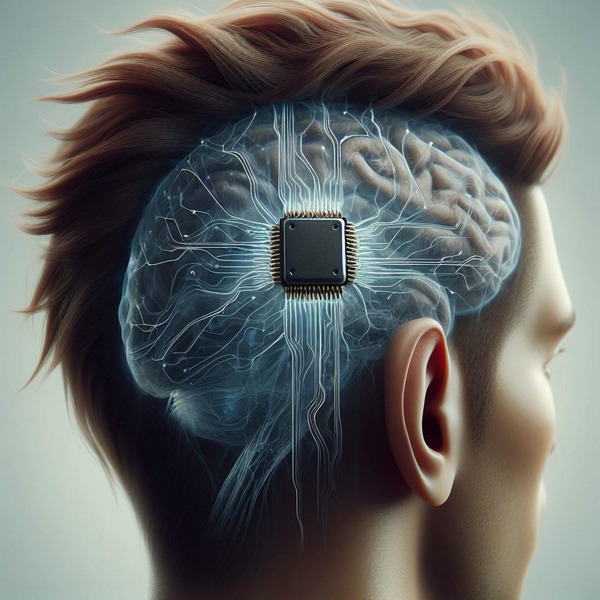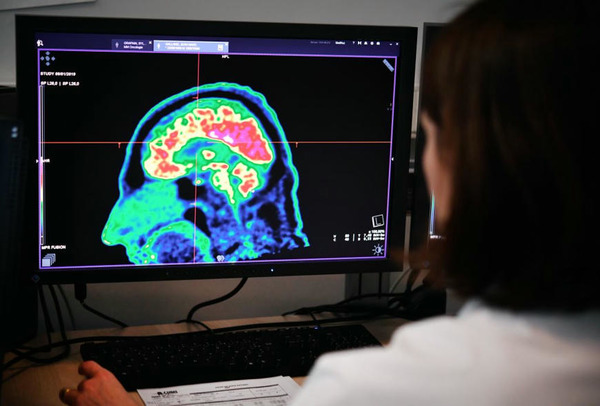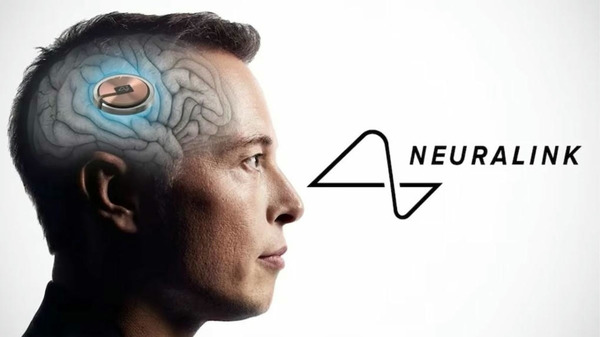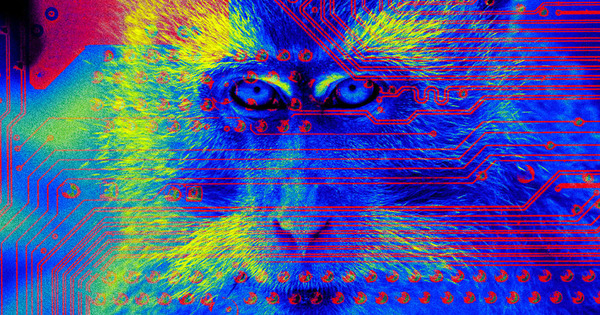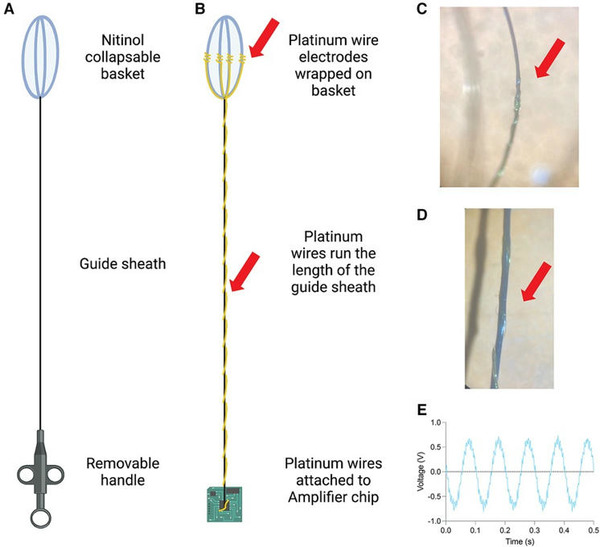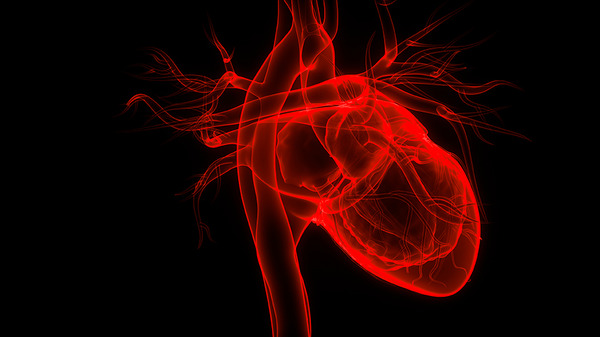 Your new post is loading...

|
Scooped by
Beeyond
|
The company claims even with a reduced number of electrodes, it was able to actually increase the BPS, in the long run, thanks to adjustments made to the "recording algorithm" and improvements to "the techniques to translate these signals into cursor movements."

|
Scooped by
Beeyond
|
Amount of data captured from the device declined, although the patient and the Elon Musk-owned company still staged a successful demonstration

|
Scooped by
Beeyond
|
A company blog post on Wednesday said threads connecting the implant to Arbaugh's brain recently "retracted... resulting in a net decrease in the number of effective electrodes" and the patient's ability to operate the cursor. While offering no explanation for the receding threads, the company said it made modifications to make the implant more sensitive to neural signals. This, with other improvements, "produced a rapid and sustained improvement in bits-per-second, that has now superseded Noland's initial performance."

|
Scooped by
Beeyond
|
In a blog post, the company shared that a number of connective threads have retracted. Neuralink did not give a specific number but it was enough to significantly affect the data speed and effectiveness of the chip. Despite the issue, the company assured that their team modified the recording algorithm to help improve the process between the signals. In addition, the increased sensitivity would enhance the user interface.

|
Scooped by
Beeyond
|
Neuralink didn't reveal how many specific threads have retracted from Arbaugh's brain tissue, but the company did explain a workaround was conceived. Modifications were made to the recording algorithm for the BCI, which led to improvements in Arbaugh's cursor movements. Most importantly, Neuralink considered removing the implant entirely but decided against it because it hasn't negatively impacted Arbaugh's health or safety.

|
Scooped by
Beeyond
|
On Thursday at the Bloomberg Tech Summit, Synchron’s founder, Tom Oxley, disclosed the company’s expansion strategy saying that it intends to adapt its existing device, the Stentrode, for these new treatments, reported Bloomberg. Oxley stated that the company intends to initiate a review by the U.S. Food and Drug Administration for its Parkinson's and epilepsy treatment, but refrained from specifying the timeline.

|
Scooped by
Beeyond
|
In my opinion, the least invasive technology will win out in the end. Similar to how the hybrid approach is winning with electric vehicles right now. People want the convenience and the flexibility. With brain and computer interfaces, the discreet strap or a hidden device will be most appealing. My prediction is that this will be very common in about 10 years to have this type of augmentation used as long as it isn't invasive. Meaning, it would be something worn outside the body rather than embedded inside. This will likely be possible as technology for detecting brain patterns continues to advance.

|
Scooped by
Beeyond
|
Nolan Arbaugh, the first human with the Neuralink brain chip, claims he can consistently outmanoeuvre his friends in "Mario Kart" with mind control. This feat is awe-inspiring because he wins games most quadriplegics would struggle with. Early adopters of Neuralink's brain chip report using it for extended gaming sessions, with some logging up to 12 hours per day. The Elon Musk-led neurotechnology company unveiled results from the first 100 days of its groundbreaking PRIME Study.

|
Scooped by
Beeyond
|
Dans un communiqué paru ce mercredi 8 mai, la start-up américaine a annoncé que son implant a montré une baisse d’efficacité, quatre mois après avoir été introduit sur le premier patient humain.

|
Scooped by
Beeyond
|
The general concept of BCI technology involves using an implant that can pick up signals from the brain for a variety of purposes, such as helping people with health conditions to speak, walk or use electronic devices in ways they couldn’t before.

|
Scooped by
Beeyond
|
If you open your devices with a fingerprint or face scan, you're probably OK with tech companies having some of your biological data. Now, the rise of neurotech wearables is putting your brainwaves on the table, too.

|
Scooped by
Beeyond
|
La première utilisation de la puce cérébrale Neuralink offre jusque-là des résultats impressionnants et prometteurs. La start-up d'Elon Musk capte toute l'attention, mais il ne faut pas oublier que d'autres acteurs existent également dans le secteur. Loin du feu des projecteurs, ils travaillent sur leurs propres solutions cerveau-machine.

|
Scooped by
Beeyond
|
The company, Beijing Xinzhida Neurotechnology, which is backed by the Chinese government, unveiled its device, the NeuCyber Array BMI (brain-machine interface) System at a technology convention in Beijing on Thursday, according to Reuters.

|
Scooped by
Beeyond
|
The purpose of this thematic review is to provide an overview of the advantages of endovascular BCI compared with conventional BCI, as well as the specific anatomical areas of interest of existing studies. Given the rapid development of endovascular interventional neurosurgery, we also review the latest information on relevant ongoing clinical trials and the research outlook for endovascular electrodes. 本专题综述旨在概述血管内BCI与传统BCI相比下的优势,以及现有研究关注的特定解剖区域。鉴于血管内介入神经外科的快速发展,我们还回顾了相关正在进行的临床试验的最新信息以及血管内电极的研究前景。

|
Scooped by
Beeyond
|
Electrical stimulation of neural tissue and recording of neural activity are the bases of emerging prostheses and treatments for spinal cord injury, stroke, sensory deficits, and drug-resistant neurological disorders. Safety and efficacy are key aspects for the clinical acceptance of therapeutic neural stimulators. The cortical vasculature has been shown to be a safe site for implantation of electrodes for chronically recording neural activity, requiring no craniotomy to access high-bandwidth, intracranial EEG.

|
Scooped by
Beeyond
|
The device described here was created with entirely off the shelf materials, but several alternative configurations exist. In general, the components are a long guidewire and expanding scaffold (here a stone retrieval basket was used); a guide catheter (here the sheath from the stone retrieval basket was used); electrodes attached to the scaffold and connected to the acquisition device (here platinum was used); and an acquisition component (here an Oscium mobile acquisition device was used). Any off the shelf existing devices could be used to make the device so long as the diameter of the scaffold and wire match the internal diameter of the guide catheter.

|
Scooped by
Beeyond
|
Also, the surface of neural devices can be chemically functionalized and coated with anti-inflammatory materials, which will show similar effects by minimizing foreign body responses. A surface modification technique can modify the surface of implants with a slippery surface inspired by the Nepenthes pitcher plant to achieve excellent repellency against bio-substances (Chae et al., 2020). Inspired by this, the surface of a fiber-based neural interface can be modified to achieve immune evasiveness and therefore reduce the decay of performance caused by immune responses.

|
Scooped by
Beeyond
|
The intracranial venous system represents a promising conduit for neuromodulation devices. The ideal endovascular neuromodulation device would have low thrombogenicity, high biocompatibility without compromising durability, and carry a low infection risk. To achieve this goal, there are several areas in which further research is necessary.

|
Scooped by
Beeyond
|
Cardiovascular neuromodulation is an emerging field with ongoing research and clinical trials to investigate its safety and efficacy in various cardiovascular conditions. It has the potential to offer new treatment options for patients with cardiovascular conditions that fail to respond to the traditional therapies. However, further research is needed to fully understand its mechanisms of action and long-term outcomes.

|
Scooped by
Beeyond
|
Implantable bioelectronic devices for the simulation of peripheral nerves could be used to treat disorders that are resistant to traditional pharmacological therapies. However, for many nerve targets, this requires invasive surgeries and the implantation of bulky devices (about a few centimetres in at least one dimension). Here we report the design and in vivo proof-of-concept testing of an endovascular wireless and battery-free millimetric implant for the stimulation of specific peripheral nerves that are difficult to reach via traditional surgeries. The device can be delivered through a percutaneous catheter and leverages magnetoelectric materials to receive data and power through tissue via a digitally programmable 1 mm × 0.8 mm system-on-a-chip.

|
Scooped by
Beeyond
|
HF hospitalization rates and symptom burdens remain high in patients with HF. In addition to drug therapy, several interventional procedures for neuromodulation have been increasingly investigated in patients with HF. This article summarizes the pathophysiologic rationale and latest clinical evidence for interventional neuromodulating therapies investigated in HF, including catheter-based renal sympathetic denervation (RDN), unilateral electrical baroreflex activation therapy (BAT), and endovascular BAT

|
Scooped by
Beeyond
|
Autonomic modulation has been proposed as a potential therapeutic strategy aimed at reduction of systemic inflammation. Such therapies, complementary to drug and device-based therapies may lead to improved patient outcomes and reduce disease burden. Most professional societies currently do not provide a clear recommendation on the use of neuromodulation techniques in HF. These include direct and indirect vagal nerve stimulation, spinal cord stimulation, baroreflex activation therapy, carotid sinus stimulation, aortic arch stimulation, splanchnic nerve modulation, cardiopulmonary nerve stimulation, and renal sympathetic nerve denervation. In this review, we provide a comprehensive overview of neuromodulation in HF.

|
Scooped by
Beeyond
|
Deployed in the correct manner, future BCIs have the potential to enable their users to control computers with their thoughts after loss of function. This could be life-changing for millions of patients with conditions such as locked-in syndrome, amyotrophic lateral sclerosis (ALS), or tetraplegia. Clinical research and testing of devices for various conditionsopens in a new tab or window is ongoing, and several companiesopens in a new tab or window have made significant stridesopens in a new tab or window to bring these devicesopens in a new tab or window toward commercialization and reaching patients.

|
Scooped by
Beeyond
|
Most of the companies working in this space have the same goal: capturing enough information from the brain to decipher the user’s intention. The idea is to aid communication for people who can’t easily move or speak, either by helping them navigate a computer cursor or by actually translating their brain activity into speech or text.

|
Scooped by
Beeyond
|
Throughout the brain-computer interface industry, from the birth of the BCI prototype in 1924 to the first implantation of electrodes in a monkey's brain by American scientist Eberhard Fetz in 1969, forming a closed-loop neuromodulation. After the theoretical germination, conceptual demonstration, until 2015, from the California Polytechnic neuroscientist Richard Andersen successfully implanted a chip in the brain of a quadriplegic patient, so that he had a mouthful of cold beer, brain-computer technology finally had a major breakthrough. 2021 Musk's Neuralink successfully utilized the 1024-channel flexible electrodes to achieve the monkey to play the game , 2022 Nature publishes data indicating that humans can achieve 99% accuracy by typing with their minds. The global brain-computer interface technology has already advanced to the industrial development period.
|

Curated by Beeyond
BEEYOND is a consulting company in the field of disruptive innovation, accompanying established companies on out-of-the-core growth strategy, from creation of new concepts to product launch. Reach us at: contact@beeyond.fr.
|

 Your new post is loading...
Your new post is loading...




